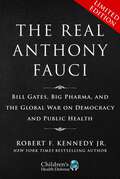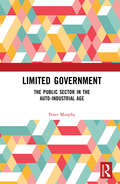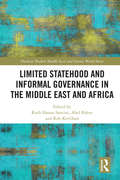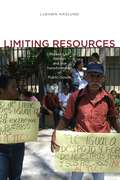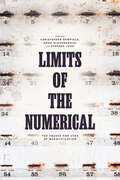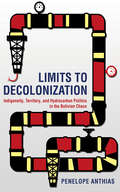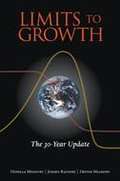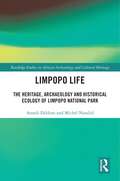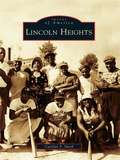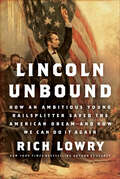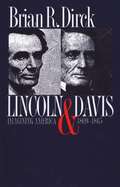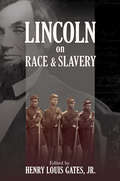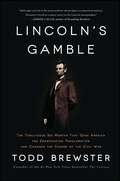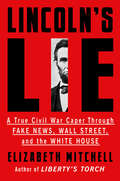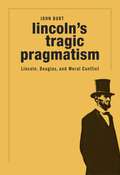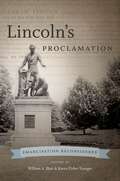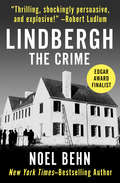- Table View
- List View
Limited Boxed Set: Bill Gates, Big Pharma, and the Global War on Democracy and Public Health (Children’s Health Defense)
by Robert F. Kennedy Jr.#1 on AMAZON, and a NEW YORK TIMES, WALL STREET JOURNAL, USA TODAY and PUBLISHERS WEEKLY NATIONAL BESTSELLERPharma-funded mainstream media has convinced millions of Americans that Dr. Anthony Fauci is a hero. He is anything but.As director of the National Institute of Allergy and Infectious Diseases (NIAID), Dr. Anthony Fauci dispenses $6.1 billion in annual taxpayer-provided funding for scientific research, allowing him to dictate the subject, content, and outcome of scientific health research across the globe. Fauci uses the financial clout at his disposal to wield extraordinary influence over hospitals, universities, journals, and thousands of influential doctors and scientists—whose careers and institutions he has the power to ruin, advance, or reward. During more than a year of painstaking and meticulous research, Robert F. Kennedy Jr. unearthed a shocking story that obliterates media spin on Dr. Fauci . . . and that will alarm every American—Democrat or Republican—who cares about democracy, our Constitution, and the future of our children&’s health. The Real Anthony Fauci reveals how &“America&’s Doctor&” launched his career during the early AIDS crisis by partnering with pharmaceutical companies to sabotage safe and effective off-patent therapeutic treatments for AIDS. Fauci orchestrated fraudulent studies, and then pressured US Food and Drug Administration (FDA) regulators into approving a deadly chemotherapy treatment he had good reason to know was worthless against AIDS. Fauci repeatedly violated federal laws to allow his Pharma partners to use impoverished and dark-skinned children as lab rats in deadly experiments with toxic AIDS and cancer chemotherapies. In early 2000, Fauci shook hands with Bill Gates in the library of Gates&’ $147 million Seattle mansion, cementing a partnership that would aim to control an increasingly profitable $60 billion global vaccine enterprise with unlimited growth potential. Through funding leverage and carefully cultivated personal relationships with heads of state and leading media and social media institutions, the Pharma-Fauci-Gates alliance exercises dominion over global health policy. The Real Anthony Fauci details how Fauci, Gates, and their cohorts use their control of media outlets, scientific journals, key government and quasi-governmental agencies, global intelligence agencies, and influential scientists and physicians to flood the public with fearful propaganda about COVID-19 virulence and pathogenesis, and to muzzle debate and ruthlessly censor dissent.
Limited Government: The Public Sector in the Auto-Industrial Age
by Peter MurphyThis book explores why, despite increased government spending on income-support, health and education, the costs of public goods are rising and their quality is declining. Charting the rise of big government, the author identifies a growing divergence between public-sector ideals and the realities of troubled political economies grappling with debt, deficits, ageing populations, improvident social insurance, declining education test scores and multiplying health costs. Limited Government analyzes in detail the social and political factors in major economies that drive up public spending, as well as the relationship between spending and outcomes. By developing an alternate model of public finances, and engaging in a critique of the managerial society, the author emphasizes the positive effects of self-management, social self-organization and technological automation, arguing that high-quality, low-cost goods are the result of nations that save, not states that tax. A sociological account of public finances, Limited Government outlines how governments can spend less and yet help ensure good broad equitable standards of health, education and income security.
Limited Statehood and Informal Governance in the Middle East and Africa (Durham Modern Middle East and Islamic World Series)
by Ruth Hanau Santini Abel Polese Rob KevlihanHybrid forms of governance – where the central state authority does not possess a monopoly of violence and fails to exercise control – are not only an epiphenomena, but a reality likely to persist. This book explores this phenomenon drawing on examples from the Middle East and Africa. It considers the different sorts of actors – state and non-state, public and private, national and transnational – which possess power, examines the dynamics of the relationships between central authorities and other actors, and reviews the varying outcomes. The book provides an alternative view of the way in which governance has been constructed and lived, puts forward a conceptualisation of various forms of governance which have hitherto been regarded as exceptions, and argues for such forms of governance to be regarded as part of the norm.
Limiting Resources: Market-Led Reform and the Transformation of Public Goods (G - Reference, Information and Interdisciplinary Subjects)
by LaDawn HaglundThe provision of public goods such as education, electricity, health, sanitation, and water used to be regarded as primarily the responsibility of governments, but in the 1980s privatization of such services spread and reliance on market mechanisms instead of governments became common in many parts of the world, including developing countries. The record of the past twenty-five years of market-led development, however, has not been encouraging. Not only has it failed to improve public services significantly, but it has also undermined democratic institutions and processes, reproduced authoritarian relations of power, and suppressed alternatives made possible by an increasing global acceptance of the importance of economic and social rights. In Limiting Resources, LaDawn Haglund seeks an understanding of public goods that can better serve the needs of people in developing countries today.Haglund critiques the narrow conception of public goods used in economics, which tends to limit the range of resources considered “public,” and proposes an expanded conception drawing from multiple disciplines that incorporates issues of justice, inclusion, and sustainability. She then uses case studies of electricity and water provision in Central America to illuminate the conditions for success and the causes of failure in constructing adequate mechanisms for the supply of public goods. She follows with an analysis of political conflicts over privatization that reveals how neoliberal policies have made effective state action difficult. The book concludes with suggestions for ways in which this reformulated conception of public goods can be applied to promote justice, sustainability, and economic and social rights in developing countries.
Limits of Life: Reflections on Life, Death, and the Body in the Age of Technoscience
by Martin Eggen Mogseth & Fartein Hauan NilsenNew technologies and scientific imagination rearrange the boundary that we identify as the beginning and end of life. New techno-social constellations, such as the ever-increasing presence of digital avatars and genetic screenings, implore us to reconsider and transcend the existing definitions of life and death. Through a multidisciplinary approach, this volume explores how the limitations and perceived finality of life and death are reconstituted through engagements with modern technology.
Limits of the Numerical: The Abuses and Uses of Quantification
by Christopher Newfield Stephen John Anna AlexandrovaThis collection examines the uses of quantification in climate science, higher education, and health. Numbers are both controlling and fragile. They drive public policy, figuring into everything from college rankings to vaccine efficacy rates. At the same time, they are frequent objects of obfuscation, manipulation, or outright denial. This timely collection by a diverse group of humanists and social scientists challenges undue reverence or skepticism toward quantification and offers new ideas about how to harmonize quantitative with qualitative forms of knowledge. Limits of the Numerical focuses on quantification in several contexts: climate change; university teaching and research; and health, medicine, and well-being more broadly. This volume shows the many ways that qualitative and quantitative approaches can productively interact—how the limits of the numerical can be overcome through equitable partnerships with historical, institutional, and philosophical analysis. The authors show that we can use numbers to hold the powerful to account, but only when those numbers are themselves democratically accountable.
Limits of the Numerical: The Abuses and Uses of Quantification
by Christopher Newfield Stephen John Anna AlexandrovaThis collection examines the uses of quantification in climate science, higher education, and health. Numbers are both controlling and fragile. They drive public policy, figuring into everything from college rankings to vaccine efficacy rates. At the same time, they are frequent objects of obfuscation, manipulation, or outright denial. This timely collection by a diverse group of humanists and social scientists challenges undue reverence or skepticism toward quantification and offers new ideas about how to harmonize quantitative with qualitative forms of knowledge. Limits of the Numerical focuses on quantification in several contexts: climate change; university teaching and research; and health, medicine, and well-being more broadly. This volume shows the many ways that qualitative and quantitative approaches can productively interact—how the limits of the numerical can be overcome through equitable partnerships with historical, institutional, and philosophical analysis. The authors show that we can use numbers to hold the powerful to account, but only when those numbers are themselves democratically accountable.
Limits of the Numerical: The Abuses and Uses of Quantification
by Christopher Newfield Stephen John Anna AlexandrovaThis collection examines the uses of quantification in climate science, higher education, and health. Numbers are both controlling and fragile. They drive public policy, figuring into everything from college rankings to vaccine efficacy rates. At the same time, they are frequent objects of obfuscation, manipulation, or outright denial. This timely collection by a diverse group of humanists and social scientists challenges undue reverence or skepticism toward quantification and offers new ideas about how to harmonize quantitative with qualitative forms of knowledge. Limits of the Numerical focuses on quantification in several contexts: climate change; university teaching and research; and health, medicine, and well-being more broadly. This volume shows the many ways that qualitative and quantitative approaches can productively interact—how the limits of the numerical can be overcome through equitable partnerships with historical, institutional, and philosophical analysis. The authors show that we can use numbers to hold the powerful to account, but only when those numbers are themselves democratically accountable.
Limits to Decolonization: Indigeneity, Territory, and Hydrocarbon Politics in the Bolivian Chaco (Cornell Series on Land: New Perspectives on Territory, Development, and Environment)
by Penelope AnthiasPenelope Anthias’s Limits to Decolonization addresses one of the most important issues in contemporary indigenous politics: struggles for territory. Based on the experience of thirty-six Guaraní communities in the Bolivian Chaco, Anthias reveals how two decades of indigenous mapping and land titling have failed to reverse a historical trajectory of indigenous dispossession in the Bolivian lowlands. Through an ethnographic account of the "limits" the Guaraní have encountered over the course of their territorial claim—from state boundaries to landowner opposition to hydrocarbon development—Anthias raises critical questions about the role of maps and land titles in indigenous struggles for self-determination.Anthias argues that these unresolved territorial claims are shaping the contours of an era of "post-neoliberal" politics in Bolivia. Limits to Decolonization reveals the surprising ways in which indigenous peoples are reframing their territorial projects in the context of this hydrocarbon state and drawing on their experiences of the limits of state recognition. The tensions of Bolivia’s "process of change" are revealed, as Limits to Decolonization rethinks current debates on cultural rights, resource politics, and Latin American leftist states. In sum, Anthias reveals the creative and pragmatic ways in which indigenous peoples contest and work within the limits of postcolonial rule in pursuit of their own visions of territorial autonomy.
Limits to Growth: The 30-Year Update
by Jorgen Randers Dennis Meadows Donella MeadowsJust over 30 years ago a path-breaking book was published called "The Limits to Growth." It posited the then controversial idea that unlimited growth on a finite planet would inevitably lead to ecological collapse. The book was translated into more than a dozen languages. Now "Limits to Growth: The 30 year Update" takes the analysis into the first decade of the 21st century to show that while the situation remains precarious, there is still time to bring the Earth back from the brink of ecological collapse.
Limpopo Life: The Heritage, Archaeology and Historical Ecology of Limpopo National Park (Routledge Studies in African Archaeology and Cultural Heritage)
by Anneli Ekblom Michel NotelidLimpopo Life introduces the reader to the material culture, oral histories, and the negotiation of conservation and landscape in an area now known as Limpopo National Park.Introducing the archaeology of a region that has not been surveyed or discussed, this book connects to the archaeology, history, heritage and conservation discussions in the southern African region as a whole. Vegetation history and paleoecology are combined with archaeological surveys and excavations, written sources, oral histories and travelogues to draw a picture of the diverse landscape of the Limpopo region. Intermixed within this narrative are sections that focus on an individual species, a life history, or an event providing a view of the complex and dynamic interactions. The role of humans in this diverse environment and how they have co-evolved with other species, shaping each other's destinies in a consequential and accidental way, is outlined.This book will be of interest to researchers and students interested in the archaeology, heritage and conservation of Mozambique, Zimbabwe and northern South Africa. It will also be of relevance to readers interested in the social history of the Limpopo and Kruger National Parks and this cross-border area.
Lincoln Heights (Images of America)
by Carolyn F. SmithLocated north of Cincinnati in the Mill Creek Valley, Lincoln Heights was the first African American self-governing community north of the Mason-Dixon Line. The development of Lincoln Heights began in 1923 when the Haley-Livingston Land Company of Chicago sold lots to black families in an unincorporated area called the Cincinnati Industrial Subdivision, now the southern section of Lincoln Heights. Water and sewerage were provided by special assessment through the Works Progress Administration, there were no building and zoning code services, fire and police protection were virtually nonexistent, and street maintenance and lighting were extremely inadequate. In 1939, residents of the area began efforts to incorporate so they could provide safety and necessary services for their growing community. Several of the original petitioners for incorporation lived in the Valley View subdivision, which later became the Wright Aeronautical plant, where many black migrants from the South came to help manufacture the famous B-29 bomber.
Lincoln Legends: Myths, Hoaxes, and Confabulations Associated with Our Greatest President
by Edward Steers Jr.&“Succinctly and eloquently debunks 14 popular myths about the Great Emancipator's life and death [with] solid documentation.&” —Publishers Weekly In the more than 150 years since his death, Abraham Lincoln has become America&’s most revered president. The mythmaking about this self-made man began early, some of it starting during his campaign for the presidency in 1860. As an American icon, Lincoln has been the subject of speculation and inquiry as authors and researchers have examined every aspect― personal and professional ―of the president&’s life. In Lincoln Legends, noted historian and Lincoln expert Edward Steers Jr. carefully scrutinizes some of the most notorious tall tales and distorted ideas about America&’s sixteenth president. Did he write his greatest speech on the back of an envelope on the way to Gettysburg? Did he appear before a congressional committee to defend his wife against charges of treason? Was he an illegitimate child? Did he have romantic encounters with women other than his wife—or love affairs with men? What really happened in the weeks leading up to April 14, 1865, and in the aftermath of Lincoln;s tragic assassination? Lincoln Legends evaluates the evidence on all sides of the many heated debates about the Great Emancipator, and also traces the often fascinating evolution of flawed theories about Lincoln and the motivations of the individuals―occasionally sincere but more often cynical, self-serving, and nefarious―who are responsible for their dispersal. Based on extensive primary research, Lincoln Legends will settle many of the enduring questions and persistent myths about Lincoln&’s life once and for all. &“Fascinating reading.&” —Tucson Citizen
Lincoln Unbound: How an Ambitious Young Railsplitter Saved the American Dream---And How We Can Do It Again
by Rich LowryIn this thoughtful mix of history and politics, the New York Times bestselling author and editor of National Review—the conservative bible founded by William F. Buckley, Jr.—traces Abraham Lincoln's ambitious climb from provincial upstart to political powerhouse and calls for a renewal of the Lincoln ethic of relentless striving.Revered today across the political spectrum, Abraham Lincoln believed in a small but active government in a nation defined by aspiration. Fired by an indomitable ambition from a young age, the man who would be immortalized as the "railsplitter" never wanted to earn his living with an ax. He educated himself in a frontier environment characterized by mind-numbing labor and then turned his back on that world. All his life, he preached a gospel of work and discipline toward the all-important ends of self-improvement and individual advancement. As a Whig and then a Republican, he worked to smash the rural backwardness in which he was raised and the Southern plantation economy that depended on human bondage.Both were unacceptably stultifying of human potential. In short, Lincoln lived the American Dream and succeeded in opening a way to it for others. He saw in the nation's founding documents the unchanging foundation of an endlessly dynamic society. He embraced the market and the amazing transportation and communications revolutions beginning to take hold. He helped give birth to the modern industrial economy that arose before the Civil War and that took off after it.His vision of an upwardly mobile society that rewards and supports individual striving was wondrously realized. Now it is under threat. Economic stagnation and social breakdown are undermining mobility and the American way. To meet these challenges, Rich Lowry draws us back to the lessons of Lincoln. It is imperative, he argues, to preserve a fluid economy and the bourgeois virtues that make it possible for individuals to thrive within it.
Lincoln and Davis: Imagining America, 1809-1865
by Brian R. DirckAbraham Lincoln: the Great Emancipator, savior of the Union, and revered national hero. Jefferson Davis: defender of slavery, leader of a lost cause, and forlorn object of scorn. Both Lincoln and Davis remain locked in the American psyche as iconic symbols of victory and defeat. They presided over a terrible war that decided the fate of slavery and severely tested each man's resolve and potential for greatness. But, as Brian Dirck shows, such images tend to obscure the larger visions that compelled both men to pursue policies and actions that resulted in such a devastating national tragedy. Going well beyond most conventional accounts, Dirck examines Lincoln's and Davis's respective ideas concerning national identity, highlighting the strengths and shortcomings of each leader's worldview. By focusing on issues that have often been overlooked in previous studies of Lincoln and Davis-and of the war in general-he reveals the ways in which these two leaders viewed that imagined community called the American nation. The first comprehensive and detailed study to compare the two men's national imaginations, Dirck's study provides a provocative analysis of how their everyday lives-the influence of fathers and friends, jobs and homes-worked in complex ways to shape Lincoln's and Davis's perceptions of what the American nation was supposed to be and could become and how those images could reject or accommodate the institution of slavery. Dirck contends that Lincoln subscribed to the notion of a "nation of strangers" in which people never really knew one another's hearts, reflecting his wariness of sentimental attachment, while Davis held to a "community of sentiment" based on honor and comradeship that depended a great deal on emotional bonding. As Dirck shows, these two ideals are very much a part of the current national conversation-among citizens, scholars, and politicians—that has brought Davis back into the fold of great Americans while challenging many of the clichés that surround the Lincoln myth. Ultimately, Dirck argues, the imagined communities of these two remarkable men transcend the experience of war to illuminate the ongoing debates over what it means to be an American. Through this engaging and original work, he urges a restoration of balance to our understanding—not only of Lincoln and Davis, but also of the contributions made by North and South alike to those debates.
Lincoln on Race and Slavery
by Henry Louis Gates Jr.From acclaimed scholar Henry Louis Gates, Jr., the most comprehensive collection of Lincoln's writings on race and slaveryGenerations of Americans have debated the meaning of Abraham Lincoln's views on race and slavery. He issued the Emancipation Proclamation and supported a constitutional amendment to outlaw slavery, yet he also harbored grave doubts about the intellectual capacity of African Americans, publicly used the n-word until at least 1862, and favored permanent racial segregation. In this book—the first complete collection of Lincoln's important writings on both race and slavery—readers can explore these contradictions through Lincoln's own words. Acclaimed Harvard scholar and documentary filmmaker Henry Louis Gates, Jr., presents the full range of Lincoln's views, gathered from his private letters, speeches, official documents, and even race jokes, arranged chronologically from the late 1830s to the 1860s.Complete with definitive texts, rich historical notes, and an original introduction by Henry Louis Gates, Jr., this book charts the progress of a war within Lincoln himself. We witness his struggles with conflicting aims and ideas—a hatred of slavery and a belief in the political equality of all men, but also anti-black prejudices and a determination to preserve the Union even at the cost of preserving slavery. We also watch the evolution of his racial views, especially in reaction to the heroic fighting of black Union troops.At turns inspiring and disturbing, Lincoln on Race and Slavery is indispensable for understanding what Lincoln's views meant for his generation—and what they mean for our own.
Lincoln's Gamble: The Tumultuous Six Months that Gave America the Emancipation Proclamation and Changed the Course of the Civil War
by Todd Brewster“A masterful psychological portrait” (George Stephanopoulos) of the most critical six months in Abraham Lincoln’s presidency, when he wrote the Emancipation Proclamation and changed the course of the Civil War.On July 12, 1862, Abraham Lincoln spoke for the first time of his intention to free the slaves. On January 1, 1863, Lincoln signed the Emancipation Proclamation, doing precisely that. In between, however, was a tumultuous six months, an episode during which the sixteenth president fought bitterly with his generals, disappointed his cabinet, and sank into painful bouts of clinical depression. Most surprising, the man who would be remembered as “The Great Emancipator” did not hold firm to his belief in emancipation. He agonized over the decision and was wracked by private doubts almost to the moment when he inked the decree that would change a nation. It was a great gamble, with the future of the Union, of slavery, and of the presidency itself hanging in the balance. In this compelling narrative, Todd Brewster focuses on this crucial time period to ask: was it through will or by accident, intention or coincidence, personal achievement or historical determinism that he freed the slaves? “Brewster brings elegant clarity to the tangle of conflicting ideologies, loyalties, and practicalities that pushed the proclamation forward” (Publishers Weekly), portraying the president as an imperfect man with an unshakable determination to save a country he believed in, even as the course of the Civil War remained unknown.
Lincoln's Lie: A True Civil War Caper Through Fake News, Wall Street, and the White House
by Elizabeth MitchellThis &“delicious, suspenseful . . . and cleverly written romp through a dramatic and forgotten moment in American history&” reveals how Lincoln manipulated the media during the Civil War—shining new light on the current &‘fake news&’ crisis (Elizabeth Gilbert) In 1864, during the bloodiest days of the Civil War, two newspapers published a call, allegedly authored by President Lincoln, for the immediate conscription of 400,000 more Union soldiers. New York streets erupted in pandemonium. Wall Street markets went wild. When Lincoln sent troops to seize the newspaper presses and arrest the editors, it became clear: The proclamation was a lie. Who put out this fake news? Was it a Confederate spy hoping to incite another draft riot? A political enemy out to ruin the president in an election year? Or was there some truth to the proclamation—far more truth than anyone suspected? Unpacking this overlooked historical mystery for the first time, journalist Elizabeth Mitchell takes readers on a dramatic journey from newspaper offices filled with heroes and charlatans to the haunted White House confinement of Mary Todd Lincoln, from the packed pews of the celebrated preacher Reverend Henry Ward Beecher&’s Plymouth Church to the War Department offices in the nation&’s capital and a Grand Jury trial. In Lincoln&’s Lie, Mitchell brings to life the remarkable story of the manipulators of the news and why they decided to play such a dangerous game during a critical period of American history. Her account of Lincoln&’s troubled relationship to the press and its role in the Civil War is one that speaks powerfully to our current political crises: fake news, profiteering, Constitutional conflict, and a president at war with the press.
Lincoln's Springfield Neighborhood
by Richard E. Hart Bonnie E PaullWhen an emotional Abraham Lincoln took leave of his Springfield neighbors, never to return, his moving tribute to the town and its people reflected their profound influence on the newly elected president. His old neighborhood still stands today as a National Historic Site. The story of the life Lincoln and his family built there returns to us through the careful work of authors Bonnie E. Paull and Richard E. Hart. Journey back in time and meet this diverse but harmonious community as it participated in the business of everyday living while gradually playing a larger role on the national stage.
Lincoln's Tragic Pragmatism: Lincoln, Douglas, and Moral Conflict
by John BurtA New York Times Book Review Editors’ ChoiceIn 1858, challenger Abraham Lincoln debated incumbent Stephen Douglas seven times in the race for a U.S. Senate seat from Illinois. More was at stake than slavery in those debates. In Lincoln’s Tragic Pragmatism, John Burt contends that the very legitimacy of democratic governance was on the line. In a United States stubbornly divided over ethical issues, the overarching question posed by the Lincoln-Douglas debates has not lost its urgency: Can a liberal political system be used to mediate moral disputes? And if it cannot, is violence inevitable?“John Burt has written a work that every serious student of Lincoln will have to read...Burt refracts Lincoln through the philosophy of Kant, Rawls and contemporary liberal political theory. His is very much a Lincoln for our time.”—Steven B. Smith, New York Times Book Review“I'm making space on my overstuffed shelves for Lincoln’s Tragic Pragmatism. This is a book I expect to be picking up and thumbing through for years to come.”—Jim Cullen, History News Network“Burt treats the [Lincoln-Douglas] debates as being far more significant than an election contest between two candidates. The debates represent profound statements of political philosophy and speak to the continuing challenges the U.S. faces in resolving divisive moral conflicts.”—E. C. Sands, Choice
Lincoln’s Proclamation
by William A. Blair Karen Fisher YoungerThe Emancipation Proclamation, widely remembered as the heroic act that ended slavery, in fact freed slaves only in states in the rebellious South. True emancipation was accomplished over a longer period and by several means. Essays by eight distinguished contributors consider aspects of the president's decision making, as well as events beyond Washington, offering new insights on the consequences and legacies of freedom, the engagement of black Americans in their liberation, and the issues of citizenship and rights that were not decided by Lincoln's document. The essays portray emancipation as a product of many hands, best understood by considering all the actors, the place, and the time. The contributors are William A. Blair, Richard Carwardine, Paul Finkelman, Louis Gerteis, Steven Hahn, Stephanie McCurry, Mark E. Neely Jr., Michael Vorenberg, and Karen Fisher Younger.
Lindbergh: The Crime
by Noel BehnEdgar Award Finalist: This &“sensational&” and &“absolutely compelling&” true crime tale finally answers the question: Who really killed the Lindbergh baby? (San Francisco Chronicle). On the night of March 1, 1932, celebrated aviator Charles Lindbergh&’s infant son was kidnapped from his New Jersey home. The family paid $50,000 to get &“Little Lindy&” back, but his remains were discovered in a grove of trees four miles from the Lindbergh house. More than two years after the abduction, Bruno Hauptmann, an unemployed carpenter and illegal German immigrant, was caught with $20,000 of the ransom money. He was arrested, tried, and executed for the crime. But did he really do it? New York Times–bestselling author Noel Behn spent eight years investigating the case, revisiting old evidence, discovering new information, and shining a bright light on the controversial actions of public figures such as New Jersey Governor Harold Hoffman, FBI Director J. Edgar Hoover, New Jersey State Police Superintendent H. Norman Schwarzkopf, and Charles Lindbergh himself. The result is a fascinating and convincing new theory of the crime that exonerates Hauptmann and names a killer far closer to the Lindbergh family. A finalist for the Edgar Award, Lindbergh &“not only provides answers to the riddles of the &‘Crime of the Century,&’ but hurls us into time past, to a special moment in American history&” (Peter Maas, New York Times–bestselling author of Underboss).
Lindy Chamberlain: The Full Story
by Ken CrispinThe true story of a mother accused of murdering her baby in the outback of Australia.
Line in the Sand: Preserving Bedouin Culture (Fountas & Pinnell Classroom, Guided Reading Grade 6)
by Amanda YskampNIMAC-sourced textbook
Lineage Organisation in South-Eastern China (LSE Monographs on Social Anthropology)
by Maurice FreedmanThis essay is the work of a social anthropologist but it is not based upon field work. It is concerned with Chinese matters but it is not written by a sinologue. In this essay are the author’s reflections on certain aspects of southeastern Chinese society during the last hundred and fifty years, with attention on the Fukien and Kwangtung region of China has it has specialized not only in large-scale unilineal organization but also in sending people overseas.
